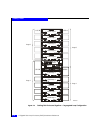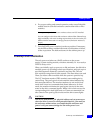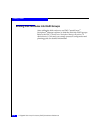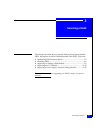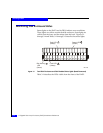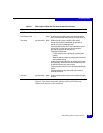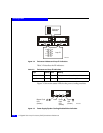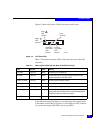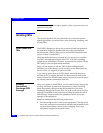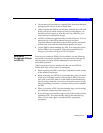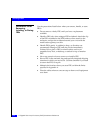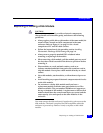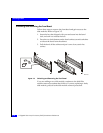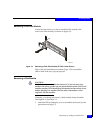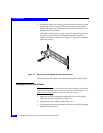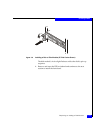
3-6
2-Gigabit Disk-Array Enclosure (DAE2) Hardware Reference
Servicing a DAE2
When a redundant FRU fails, high availability will be compromised until you
replace the faulty FRU.
Handling FRUs
This section describes the precautions that you must take and the
general procedures you must follow when removing, installing, and
storing FRUs.
Power Issues and
FRUs
The DAE2 is designed to always be powered up and hot repairable.
Its front bezel should be attached and each of its compartments
should contain a FRU or filler panel to ensure EMI compliance and
proper air flow over the FRUs.
While the disk enclosure is powered up, you can service or replace
any FRU, although removing an active LCC will affect operating
system access to the disks it controls. You should not remove a faulty
FRU until you have a replacement available.
Since you can replace or add any FRU without sliding the disk
enclosure out of the cabinet, you do not have to use cabinet anti-tip
devices when you upgrade or service a DAE2.
If you need to power down a DAE2, simply turn both the power
switches to Off, or unplug the unit. You do not need to shut down
main ac lines to the disk enclosure unless you need to power down all
the cabinet contents connected to that line.
Avoiding
Electrostatic
Discharge (ESD)
Damage
When you replace or install FRUs, you can inadvertently damage the
sensitive electronic circuits in the equipment by simply touching
them. Electrostatic charge that has accumulated on your body
discharges through the circuits. If the air in the work area is very dry,
running a humidifier in the work area will help decrease the risk of
ESD damage. You must follow the procedures below to prevent
damage to the equipment.
Read and understand the following instructions:
◆ Provide enough room to work on the equipment. Clear the work
site of any unnecessary materials or materials that naturally build
up electrostatic charge, such as foam packaging, foam cups,
cellophane wrappers, and similar items.



